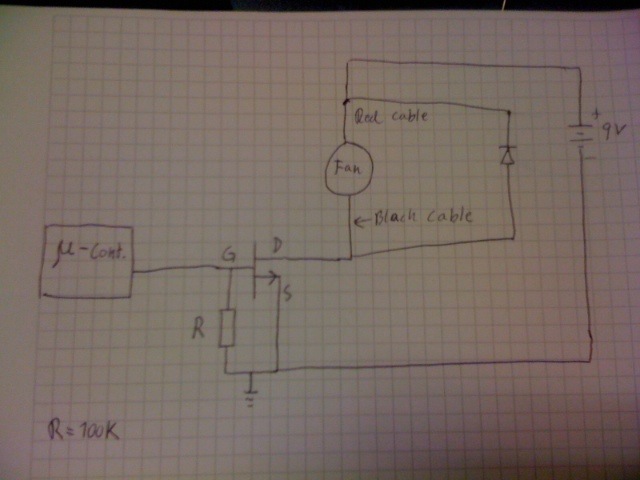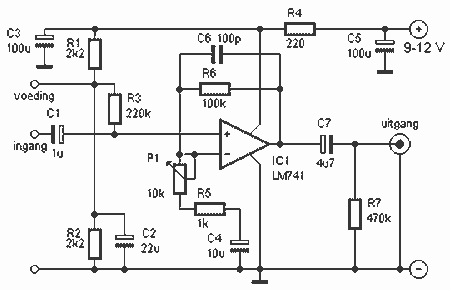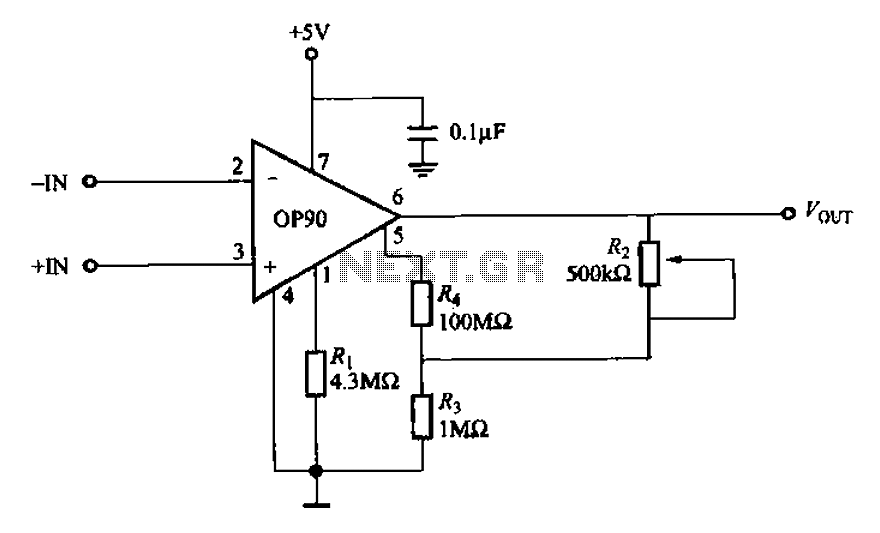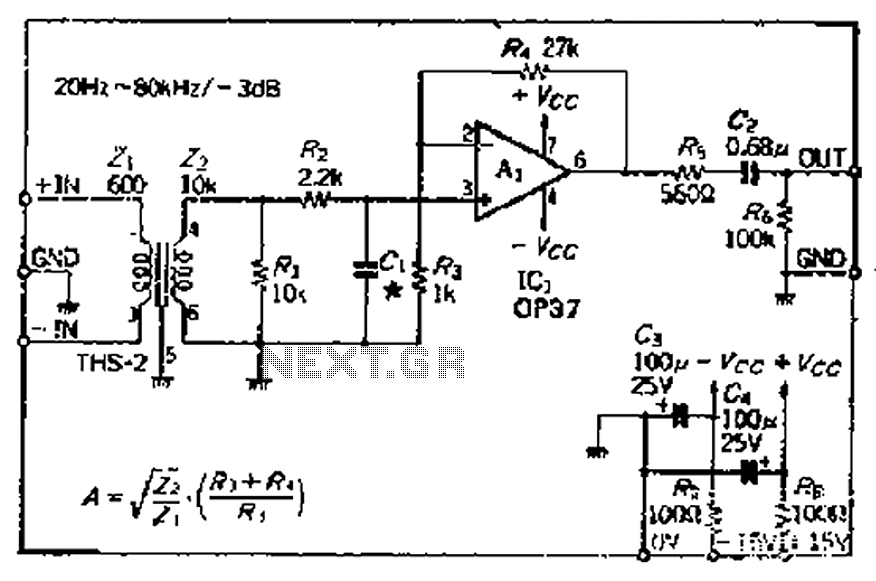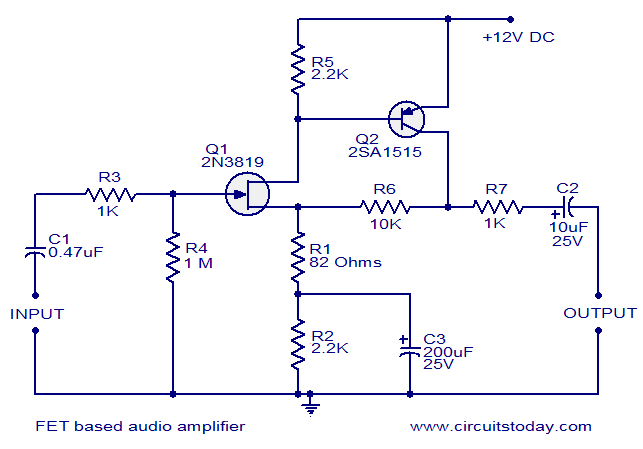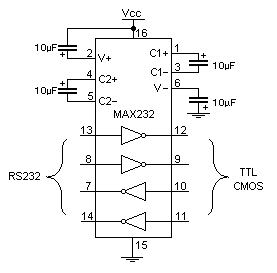
Op-Amp Mic Preamp
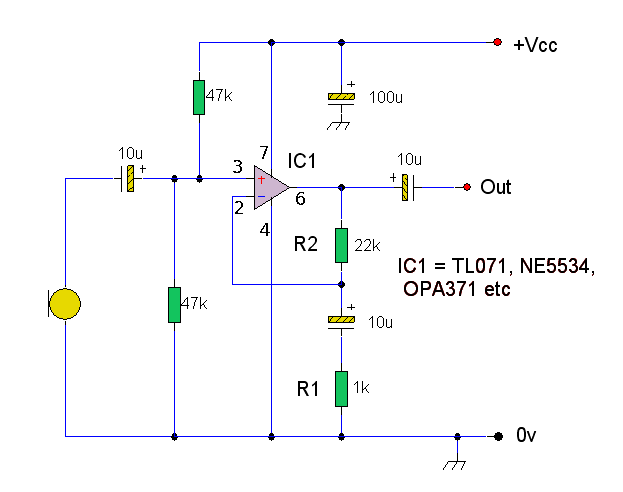
A high-quality microphone preamplifier utilizing a single power supply, designed for dynamic or electret microphones.
This microphone preamplifier circuit is engineered to enhance the audio signal from microphones, providing a clean and amplified output suitable for further processing or mixing. The design is optimized for use with both dynamic and electret microphones, making it versatile for various audio applications.
The circuit typically consists of an input stage, amplification stage, and output stage. The input stage may include a coupling capacitor to block any DC offset from the microphone, ensuring that only the AC audio signal is processed. For electret microphones, a biasing resistor is often included to provide the necessary power supply voltage.
The amplification stage is usually implemented using operational amplifiers (op-amps), configured in a non-inverting amplifier configuration to achieve high input impedance and low output impedance. This configuration is crucial for maintaining signal integrity and preventing loading effects on the microphone.
Power supply decoupling capacitors are essential in this design to filter out any noise from the power supply, ensuring a clean signal path. The output stage may include additional filtering to shape the frequency response and prevent unwanted noise from reaching subsequent audio processing equipment.
Overall, this microphone preamplifier circuit is an essential component in audio signal processing, providing the necessary gain and signal conditioning for high-quality audio reproduction.A high quality microphone preamplifier using a single power supply, suitable for dynamic or electret microphones.. 🔗 External reference
This microphone preamplifier circuit is engineered to enhance the audio signal from microphones, providing a clean and amplified output suitable for further processing or mixing. The design is optimized for use with both dynamic and electret microphones, making it versatile for various audio applications.
The circuit typically consists of an input stage, amplification stage, and output stage. The input stage may include a coupling capacitor to block any DC offset from the microphone, ensuring that only the AC audio signal is processed. For electret microphones, a biasing resistor is often included to provide the necessary power supply voltage.
The amplification stage is usually implemented using operational amplifiers (op-amps), configured in a non-inverting amplifier configuration to achieve high input impedance and low output impedance. This configuration is crucial for maintaining signal integrity and preventing loading effects on the microphone.
Power supply decoupling capacitors are essential in this design to filter out any noise from the power supply, ensuring a clean signal path. The output stage may include additional filtering to shape the frequency response and prevent unwanted noise from reaching subsequent audio processing equipment.
Overall, this microphone preamplifier circuit is an essential component in audio signal processing, providing the necessary gain and signal conditioning for high-quality audio reproduction.A high quality microphone preamplifier using a single power supply, suitable for dynamic or electret microphones.. 🔗 External reference
